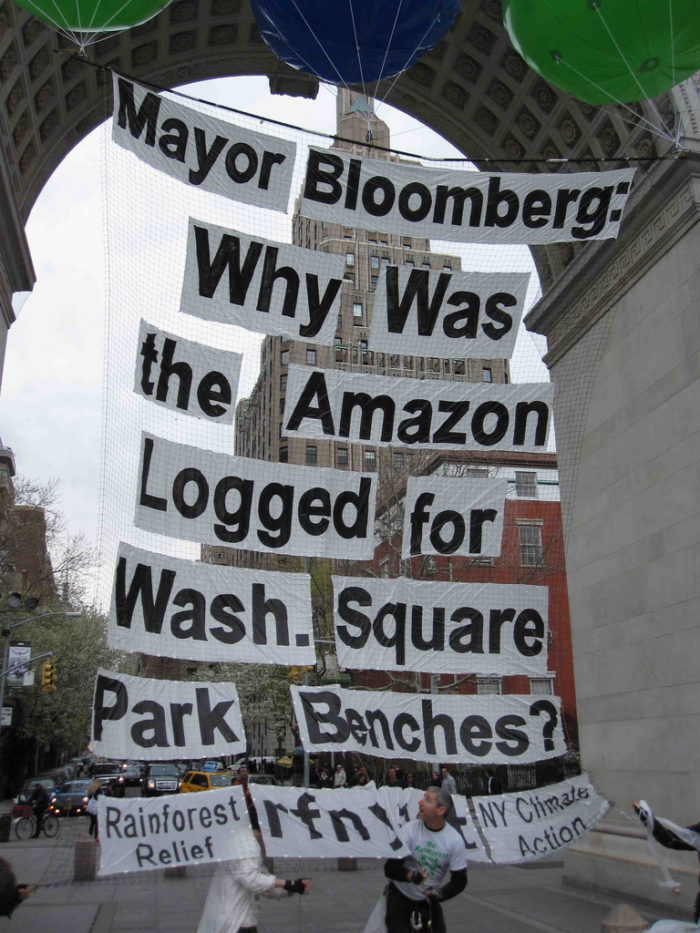
Image Credit: Rainforests of New York / CC BY 2.0 / Flickr
The Forest Stewardship Council (FSC), the world’s leading independent certifier of sustainably managed forests, is facing increasingly vitriolic attacks from various industry trade groups and players in Canada, who argue that the FSC’s policies — specifically their move toward requiring protection of threatened intact forest landscapes — will cause them to lose access to significant wood volumes they need to maintain their current operations.
Meanwhile, to keep up volumes of “sustainably harvested” wood products, the largest Canadian operators have begun promoting the Sustainable Forestry Initiative (SFI) — a logging industry created certification scheme that lacks transparent and independently verified audits and markets harmful logging practices as “sustainable.”
It’s an example of expert greenwashing and its existence goes a long way toward justifying the urgent need for FSC’s continued leadership in ensuring that consumers have access to sustainably produced products. As explained in detail below, efforts to place FSC and SFI on equal footing are little more than attempts by industry to fool customers into buying wood products that have little guarantee of coming from sustainable sources and are placing our global forests at risk of destruction.
But why are attacks on the FSC system in Canada a real threat to both FSC and the world’s forests?

Canadian logging companies have FSC certificates covering more than 50 million hectares (more than 120 million acres), the largest area of FSC certified forests in the world. Though this number is large — and represents more than 30% of the world’s FSC certified forests — it is slowly shrinking as Canadian logging companies let FSC certificates expire and move toward less rigorous, industry-backed certification standards.
Meanwhile, continued global growth in demand for wood products is putting increased pressure on the need for careful, sustainable management that protects the long-term health of the world’s forests (and by extension, the products we use from them).
FSC’s strong growth could be undermined
In its first, decade, FSC managed to certify 25 million hectares (or nearly 62 million acres) of forests globally — a number that has now been eclipsed by the nearly 190 million hectares (or nearly three times the size of Texas) that FSC has certified in 81 countries today. Its brand is well-known and major companies have demonstrated strong preferences for products blessed with the mark of FSC certification.
Not surprisingly, FSC’s rigorous auditing and monitoring, requirements for conservation, and recognition of indigenous rights and interests has also led to its continued and long-time endorsement by many of the world’s leading environmental organizations. FSC’s strong growth since its founding in 1993 provides some reassurance that this imperative is possible, but developments in Canada set a dangerous precedent that threatens to undermine this progress.

A comparison of several key FSC and SFI requirements and the logging practices each system condones illustrates the threat facing our forests if consumers are led to believe that the two certification systems are equal. Here are four reasons for consumers to avoid SFI certified products.
Misleading Labels. The one thing that conscientious consumers are sure to notice is a product’s “ecolabeling.” These labels — think Energy Star; Certified Organic; Non-GMO Project — make us feel like we have some control over what we’re buying and how it was made or its impact on the environment. For SFI-labeled products, though, there is almost no guarantee that what the label implies about its production is actually true. SFI’s own materials make this clear when they disclose that the “SFI certified sourcing label does not make claims about certified forest content.” Worse — or perhaps just as bad — SFI’s chain of custody labels overstate the “guaranteed” amount of sustainable content in products bearing the label, which are allowed to contain non-certified by-products or rely on third party certification systems that do not even meet SFI’s own criteria for sustainability.​
Logging Practices. When we think about sustainable logging, we like to think that we’re not talking about clearcutting. Unfortunately, this often isn’t the case and SFI certified forests are prime examples. Though certain types of clearcutting — known as “even-aged management” in logging parlance — are often allowed under sustainable forestry regimes, not all clearcutting is created equal. SFI is known for certifying as “sustainable” massive clearcuts where the number of trees removed exceeds the growth rate of the forest they are taken from. In other instances, clearcuts have been done on steep mountainsides prone to erosion that produces high levels of river-clogging sediment runoff. In stark contrast to FSC, SFI also has no requirement for the protection of old-growth forests — areas that are under threat around the world, despite their critical ecosystem functions and overall importance to a forest’s long term health.​
Encouraging a Race to the Bottom. SFI’s certification scheme has several huge red flags. For wood from forests in North America, for example, SFI only requires that wood not come from “illegal sources,” a requirement that basically allows sourcing from any forest, anywhere in the U.S. or Canada. Compare that to FSC, which requires not only wood from legal sources, but also harvesting practices that have not disrupted indigenous communities, has not destroyed high-value forests, or converted forests to a new use (i.e., deforestation). Similarly, SFI requires that its certified producers only comply with the minimum thresholds set by state, federal, or provincial law — thresholds that require only status quo logging practices that are well-known for failing to protect the environment, preserve endangered species, and keep our waterways clean.​
Failure to Address Climate Change. In today’s world, forests are one of our best hopes for mitigating the worst impacts of global climate change. When delegates from around the world gathered in Paris in December 2015, this point was driven home, and countries around the world agreed that efforts must be made to maximize the role played by forests as carbon sinks and the threats the world’s forests are facing due to deforestation and forest degradation. Unsurprisingly, SFI pays lip service to the issue of climate change, but continues to fail to incorporate any new standards or requirements that would help SFI-certified forests play a positive role in mitigating the problem.
Uncontrolled logging remains a serious threat
The problems with SFI go far beyond what can be encapsulated in a single post. Its audits lack the rigor of the FSC system, its funding structure is almost completely reliant on the industry it certifies, and its standards are filled with loopholes that undermine their effectiveness at every corner.
Meanwhile, the world continues to face significant deforestation and forest degradation, logging operations are pushing farther and farther into the last remaining intact territories of indigenous peoples, iconic species great and small are threatened with extinction, and the world’s largest carbon sinks could be devastated.
To face these challenges the world needs robust, scientifically defensible, collaborative, and responsive sustainable forestry regimes. One key tool to achieve this is a high-quality, independent, certification scheme. FSC, despite its imperfections, is the best we have. SFI, meanwhile, is pulling the wool over all of our eyes.
As consumers of forest products, we all have a responsibility to understand where our products come from and how they are produced. NRDC continues to endorse the FSC certification as the sole global certification system capable of moving us toward a more sustainable forestry future. Choosing FSC-certified products helps send a strong signal back to Canadian logging companies that they can’t choose to operate in unsustainable ways and expect the world not to notice.
Josh Axelrod works as a policy analyst for the National Resource Defense Council’s Canada Project and is based in Washington, D.C. This post, which originally appeared at NRDC Switchboard also included the following two footnotes: In December 2015, FSC Canada had certified 54.4 million hectares of forest; in April 2016, that number had fallen to 52.4 million hectares of forest; and, unless a link to an additional source is present, the bullet points are based on analysis conducted by Stand (formerly Forest Ethics). Links to source material may be found at the bottom of the original post.
Weekly Newsletter
Get building science and energy efficiency advice, plus special offers, in your inbox.





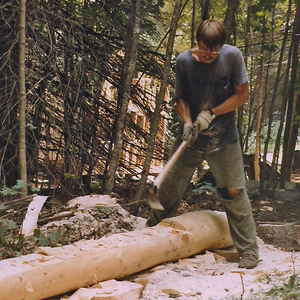
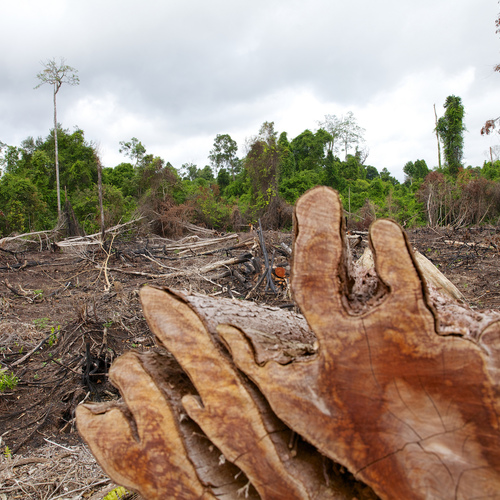
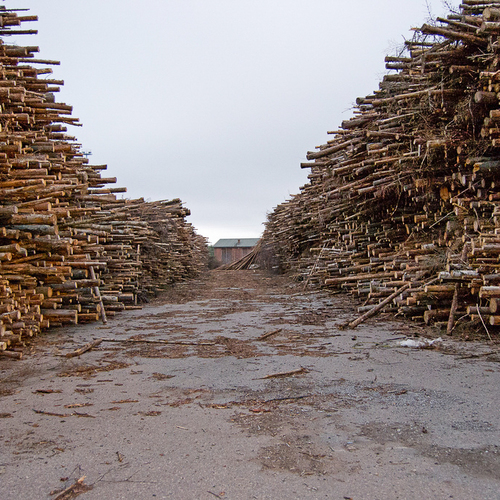
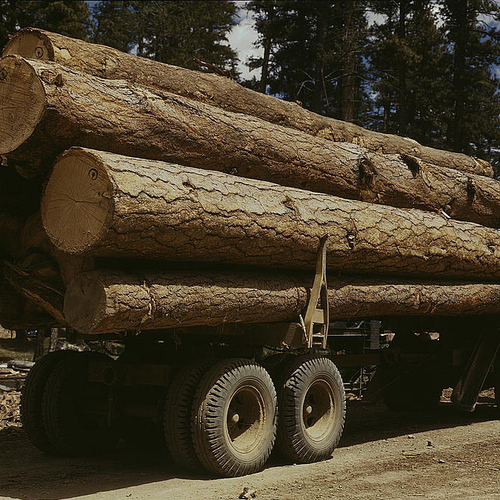






9 Comments
Headed for trouble.
I am at ground zero of the mountain pine beetle infestation that ran through British Columbia. These kind of warming caused infestations make logging practices pale by comparison. The largest pine forest in the world just kind of died and fell over. Suddenly it is the Saudi Arabia of firewood. Wildfire season is 2 months longer...and on and on. Keep an eye out for the next massive die off of an infected forest, "coming soon to a theater near you!"
The beetle induced die-off is in Montana too.
The beetle-killed forests around Helena MT are a serious fire hazard to manage, and certainly not unique. Coming soon to a forest near you, for sure. (In my area there is a constant battle to contain emerald ash borers and asian longhorned beetles, but there's less of a climate-change nexus with those.)
I wonder how much FSC forest will have gone up in flames around Fort McMurray by the time it's down to smoldering embers? (No karma cycle in progress there, eh?)
Karmic relationship
Dana,
That is a low blow to all the people that lost their homes and jobs as well as the two young people that lost their lives as a result of the Fort Mcmurray fire.
I take no pleasure in that- it's not a joke.
Seriously! I wouldn't wish that disaster on anyone! I fall WELL short of calling it "karmic justice"- there's no justice to be had here, we're all screwed by climate change, some more than others. For the record, I have relatives with direct financial stakes in Alberta's oil business. I'm likely two degrees of separation from at least a dozen Fort McMurray area residents.
Still, is it wrong to acknowledge that oil sand industry has been party to climate changes affecting fire season patterns?
Is it wrong to suggest that FSC labeling on a forest that has simply burned down is a bit futile?
As bad as this event is, (and I DO feel their pain) the residents of Fort McMurray don't have it as bad off as say, low lying islands or ocean river delta communities who are in the process of being permanently displaced. I only WISH that the forests surrounding Fort McMurray could have been harvested sustainably (per the labeling), instead of catching fire and burning people out of home & livelihood. In Alberta most of what was destroyed will get rebuilt, and life will resume at a (perhaps tempered) new normal. It's less clear if the forest will recover in a sustainably-harvestable way.
Fort McMurray "climate refugees"
Canada is the last place you would think of when the issue of "climate refugees" comes up, isn't it? You think of Bangladesh or some Island in the pacific. But suddenly 80,000 people are booted out of their homes because of fire that has multiple causes...some of them being global warming due to human caused carbon production. The future is here.
Ven
Not in anyway a comment on climate change, but the boreal forests around Fort Mac have been burning pretty well continuously for thousands of years.
Reply to Malcolm
Yes, of course the Boreal forests have been intermittently burning, they actually require it. However, the fire season has lengthened considerably and the temperature has risen and so this increases probability and the number of fires, how large they are, and how long they burn. With the human forest interface at the highest level in history due to population, houses burn more often. It is something like Fukushima, they knew about Tsunami's and they didn't manage risk as they should have. Fort McMurray had a fire risk, they knew it and did not assess it properly and perhaps denied the added element of climate change factors. There are institutions in the U.S. who are forbidden at the State level from factoring in ocean level increase, temperature increase etc, since it would acknowledge the fact of Global warming. Insanity.
Ven
How are things where you are? Here on Vancouver island it's already tinder dry and we have had a few brush fires nearby. It feels like August.
Malcolm
We are dry as a bone, and hot as heck. It is almost our duty to collect the endless dead and fallen pine beetle trees everywhere around us for firewood. This mass on the forest floor will go "like blazes" with the first lightning strike. Then we will see how the metal roofs work and the large gravel aprons in the firestorm.
Log in or create an account to post a comment.
Sign up Log in